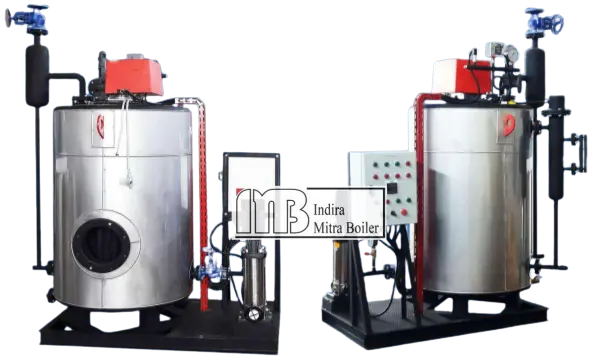
A water tube boiler is a type of boiler that uses water-filled tubes as a primary component of its system. In a water tube boiler, feedwater flows through a series of tubes containing water, and heat from the combustion of fuel flows around these tubes. This heating process produces steam used for various applications, such as power generation, building heating, and industrial processes.
Here are some key characteristics of a water tube boiler:

Clean and cold feedwater is pumped into the boiler. Feedwater typically comes from a clean water source such as a well or a treated water system.
Fuel, such as coal, oil, or gas, is burned inside the boiler's combustion chamber (furnace). The combustion process produces flames and hot gases.
Hot gases generated from combustion flow through a series of firetubes located inside the boiler. These hot gases envelop the firetubes and heat the tube walls.
The feedwater that entered the boiler flows through the heated firetubes, where the heat from the tube walls transfers thermal energy to the water, turning it into steam.
The process of heating the water causes an increase in pressure within the boiler. This pressure depends on the temperature and capacity of the boiler.
The boiler is equipped with pressure regulation and temperature control devices to maintain steam pressure and temperature within safe and application-appropriate ranges.
The steam produced in the boiler is used for various applications, such as building heating, power generation, or industrial processes. The steam can be directed to the appropriate locations as needed.
The exhaust gases from combustion, which no longer contain significant heat energy, exit through a chimney or an appropriate exhaust system. Often, the exhaust gas discharge process involves devices to reduce pollution and comply with environmental regulations.
Water tube boilers are designed to withstand high pressures, making them suitable for applications that require high-pressure steam, such as steam power generation.
The design of water-filled tubes in water tube boilers allows for efficient heat transfer, thus improving thermal efficiency in steam or hot water production.
Water tube boilers can generate steam quickly, making them suitable for applications that require instant heat production.
Water tube boilers can use various types of fuels, including natural gas, oil, biomass, and coal, depending on the design and application requirements.
Water tube boilers can be designed in a modular fashion, allowing for easy capacity expansion to meet changing demands.
Water tube boilers generally have good safety features, including the ability to quickly control and regulate steam pressure and temperature.
Water tube boilers are often used in applications that require a large steam or water capacity.
Due to their robust design and the ability to handle high pressures, water tube boilers tend to have a longer service life.
For more information regarding Fire Tube Boiler Fabrication or any other inquiries, please contact:
| Phone | : | 021 59375021 (Office) |
| 0813 8866 6204 (Ratman) | ||
| 0895 3287 02165 (Wahyudin) | ||
| 0852 8276 2784 (Slamet) |
||
| : | info@indira.co.id (Office) | |
| idmratman@gmail.com (Ratman) | ||
| wahyuspi46@gmail.com (Wahyudin) | ||
| slametspi212@gmail.com (Slamet) | ||
| Address | : | Jl. Love Bird Blok D19 No. 21, Permata Sepatan, Pisangan Jaya, Sepatan, Kab. Tangerang (Office) |
| Laksana Business Park Blok F No. 9, Laksana, Pakuhaji, Kab. Tangerang (Warehouse) |